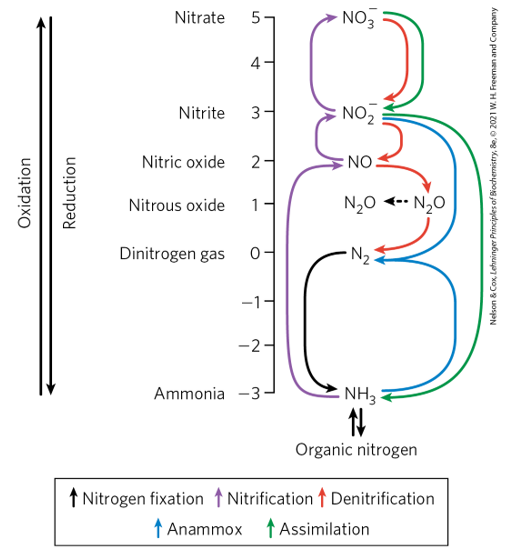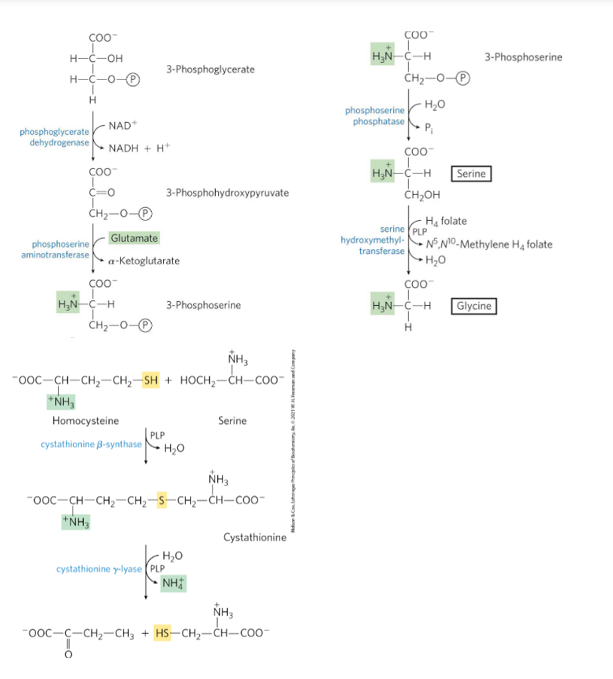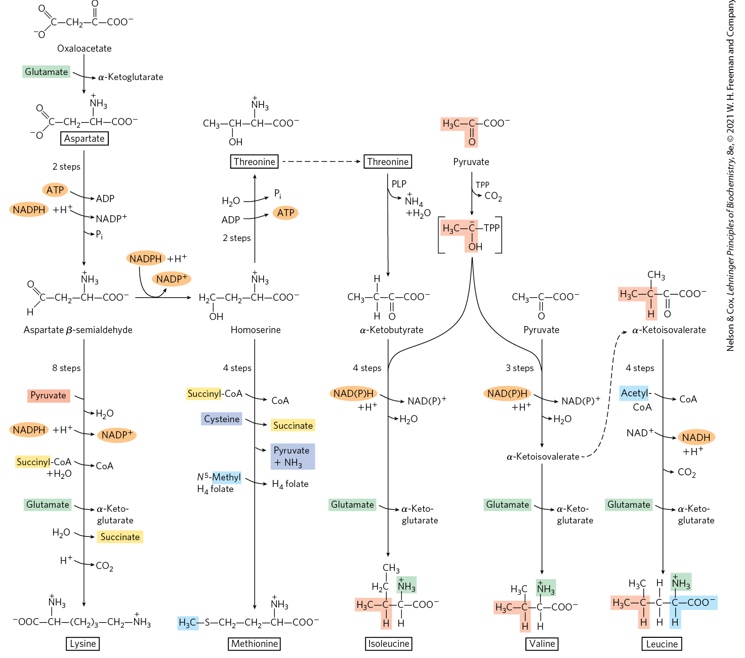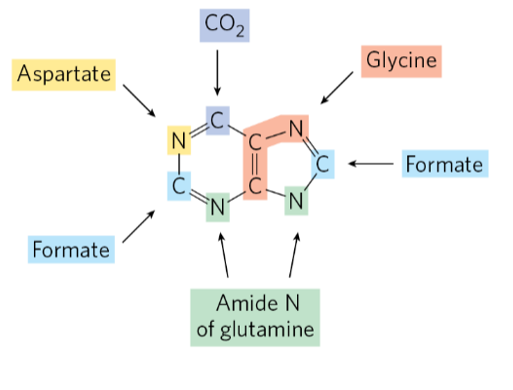-
Know the nitrogen cycle from Figure 22.1. You should be familiar with what is meant by fixation and assimilation.

Fixation: Changing N2 to biologically useful forms of nitrogen like NH3, NO2, and NO3. Most often synonymous with the reduction from N2 to NH3. Done by the nitrogenase complex: dinitrogen reductase reduces dinitrogenase (transfers electron for fixation of N2 to NH3)
Assimilation: two step reductive process to bypass atmospheric N2. 1. Nitrate reductase reduces NO3 to NO2, Nitrite Reductase reduces NO2 to NH4+. Reducation is exergonic; however it has a high activation energy requiring ATP hydrolysis.
-
Amino acids made from Erythrose 4-Phosphate and Phosphoenolpyruvate
Tryptophan, Phenylalanine, Tyrosine
-
Amino acids made from Pyruvate
Alanine, Valine, Leucine, Isoleucine
-
Amino Acids made from 3-phosphoglycerate
Serine, Glycine, Cysteine
-
Amino acids made from Ribose-5-phosphate
Histidine
-
Amino acids made from oxaloacetate
Aspartate, Asparagine, Isoleucine, Methionine, Threonine, Lysine
-
Amino acids made from A-ketoglutarate
Glutamate, Glutamine, Proline, Arginine
-
Nonessential Amino acids
Alanine, asparagine, Aspartate, Glutamate, Serine
-
Conditionally essential amino acids
Arginine, Cysteine, Glutamine, Glycine, Proline, Tyrosine
-
Essential Amino acids
Histidine, Isoleucine, Leucine, Lysine, Methionine, Phenylalanine, Threonine, Tryptophan, Valine
-
Know the reactions that give rise to serine, glycine, and cysteine.

-
Be able to describe the biosynthetic pathway of isoleucine, valine, and leucine.

-
Be familiar with the biosynthetic pathway of purines. You should be able to describe from what molecule each part of the base is derived from.

Beginning with PRPP, forms inosinate IMP the first intermediate with the purine ring nucleus. To form adenylate, needs Asp and GTP (atoms and energy). To form guanylate, needs Gln and ATP (atoms and energy)
-
Describe how the biosynthetic pathway of pyrimidines is different from purines.
Purines formed starting with PRPP attaching the ring pieces bit by bit; pyrimidines form the ring first before being attached to PRPP. Purines are formed by a salvage pathway; pyrimidines are formed de novo

